Difference between revisions of "Community-Led Total Sanitation"
(→Links) |
(→Links) |
||
| Line 89: | Line 89: | ||
*[http://www.communityledtotalsanitation.org/sites/communityledtotalsanitation.org/files/cltshandbook.pdf Handbook on Community-Led Total Sanitation]. Plan International (2008). | *[http://www.communityledtotalsanitation.org/sites/communityledtotalsanitation.org/files/cltshandbook.pdf Handbook on Community-Led Total Sanitation]. Plan International (2008). | ||
| − | *[http://www.wateraid.org/uk/about_us/newsroom/6613.asp#watch Ten steps to total sanitation], animation produced by WaterAid. The movie is available on [http://www.youtube.com/watch?v=sUFe3DBlXhA YouTube | + | *[http://www.wateraid.org/uk/about_us/newsroom/6613.asp#watch Ten steps to total sanitation], animation produced by WaterAid. The movie is available on [http://www.youtube.com/watch?v=sUFe3DBlXhA YouTube]. |
*[http://www.ids.ac.uk/ids/bookshop/wp/wp184.pdf Kar, Kamal (2003). Subsidy or Self-respect? Participatory Total Community Sanitation in Bangladesh]. IDS Working Paper, 50 pages. | *[http://www.ids.ac.uk/ids/bookshop/wp/wp184.pdf Kar, Kamal (2003). Subsidy or Self-respect? Participatory Total Community Sanitation in Bangladesh]. IDS Working Paper, 50 pages. | ||
Revision as of 00:29, 7 May 2015

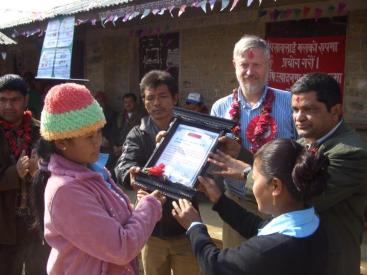
Photo: SSWM
Community-Led Total Sanitation is a way to mobilize a community, with the goal to completely eliminate open defecation in a community area. The community is facilitated to make their own analysis of open defecation and the faecal-oral contamination that it leads to. The aim is to generate a sense of 'shame' and 'disgust' among the members of the community, which mobilizes the community to take their own action to end open defecation, for example through the construction of latrines and changes of sanitation behaviour. Subsidies for hardware are not used.
'Total Sanitation' refers to 100% sanitation coverage in a target area, usually through a combination of awareness raising and affordable sanitation options.
Advantages
There are two important realizations which are at the center of the Community-Led Total Sanitation approach. The first is that merely providing toilets does not guarantee their use, and does not automatically result in improved sanitation behaviour. Projects that started with prescribed high sanitation standards and subsidies have often led do uneven adoption, problems with sustainability, and partial use. Using subsidies as an incentive also can lead to a culture of dependence on subsidies.
The second realization is that as long as even a minority of people continues to practice open defecation, everyone in the community is at risk of disease. Individual hygiene can affect the health of a whole community.
Community-Led Total Sanitation, if successful, triggers the community's desire to change and stimulates them to act. This leads to better ownership of the solutions, and greater sustainablity.
Description of the Approach
A movie of the process by WaterAid describes the process in the following steps1:
- Step 1: The community discuss the impacts of open defecation with an external facilitator.
- Step 2: Together, they visit sites of open defecation.
- Step 3: The community maps out the areas of open defecation, by drawing a map.
- Step 4: The community works out how much human waste they produce in total. On average, one house generates over one metric tonne of faeces per year. Without latrines, this waste is spread everywhere, which makes people ill.
- Step 5: The community draws up an action plan to tackle the situation.
- Step 6: Health and Hygiene education sessions are carried out.
- Step 7: The facilitator and community work out an action plan.
- Step 8: Construction of latrines begins. Members of the community who are not abiding by the new rules are somehow discouraged from this behaviour, for example by putting flags in outdoor faeces, or by issuing a fine.
- Step 9: Latrines are now available to everyone and hygiene education continues.
- Step 10: The community is awarded defecation free status and a sign is erected at the beginning of the village.
Potential
Community-Led Total Sanitation can be very effective in achieving better sanitation and hygiene behaviour. However, the uptake of the approach can be difficult, for example because the shift away from subsidies sometimes requires a different mindset. Good management and support are needed for organizations that support the communities. The approach has both been used by small NGO programmes and by large scale governmental programmes. In some cases, problems with monitoring, mediation and the supply chain exist, and it is unclear which mix of approaches is most effective.
Community-Led Total Sanitation can be a very good starting point for other community action activities, as it mobilizes the community towards common action. As sanitation interventions have immediate health benefits, this demonstrates the power of collective action, which builds confidence in the community to undertake other developmental projects as well.
Field experiences
Community-Led Total Sanitation was first pioneered in Bangladesh in 1999 by Kamal Kar (see external links for a list of his articles on the subject), and since then has been widely adopted in that country in in others, particularly in South and Southeast Asia. The approach is also being used in Africa, notably in Uganda and Zambia.2
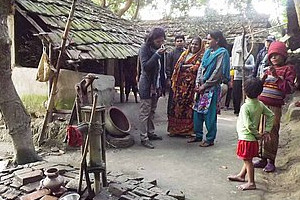 Coastal area Water, Sanitation and Hygiene |
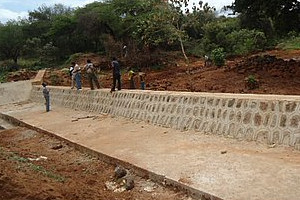 Support on WASH: Miyo woreda |
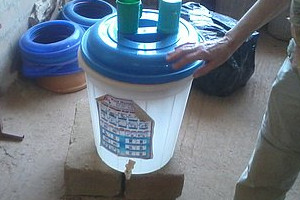 Cost effective means of financing WASH |
 Upscaling sanitation with community credit |
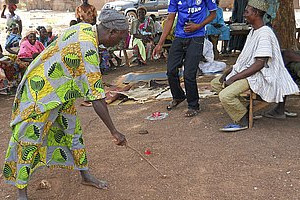 Upscaling CLTS for Healthy Communities | ||
 Partnership in WASH services delivery |
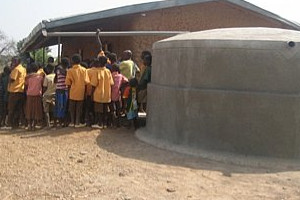 Northern Region WASH Programme |
 Scaling-up using CLTS in Kenya |
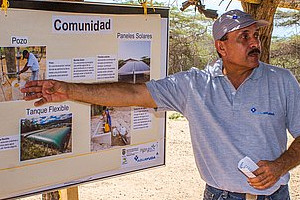 MWA-LAP: Colombia |
 Community-led WASH and Safe Motherhood | ||
 Improving Communal Health Through WASH |
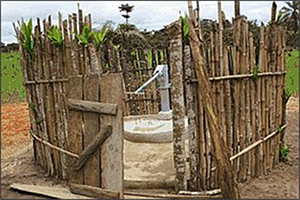 Improved Water Sanitation and Hygiene |
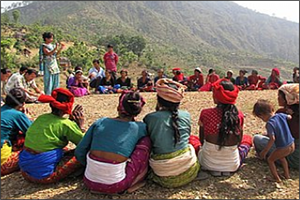 Community-based WASH Project in Nepal |
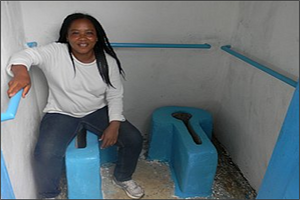 WaterAid Rural WASH Project |
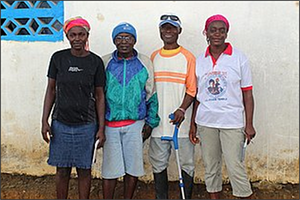 Accelerating Sanitation and Water for All 1 | ||
Links
- Tribals in Jharkhand plan for water security. To let people make their own decisions and to understand that the best solution doesn't always work are two big lessons that have come from meetings with Jharkhand's tribals.
- Répertoire des outils pédagogiques Eau, assainissement & Coopération. Social sustainability tools for WASH, includes gender topics. French and English versions.
- Stefanie Keller, Community-Led Total Sanitation. SSWM.
- Community-Led Total Sanitation. Livelihoods connect website. Contains many links.
- Scaling-Up Rural Sanitation in South Asia. Lessons Learned from Bangladesh, India, and Pakistan. WSP. May 2005.
- Handbook on Community-Led Total Sanitation. Plan International (2008).
- Ten steps to total sanitation, animation produced by WaterAid. The movie is available on YouTube.
- Kar, Kamal (2003). Subsidy or Self-respect? Participatory Total Community Sanitation in Bangladesh. IDS Working Paper, 50 pages.
- Kar, Kamal and Bongartz, Petra (2006). 'Update on Some Recent Developments in Community-Led Total Sanitation', Update paper on IDS Working Paper 257, Brighton: Institute of Development Studies.
References
- ↑ http://www.wateraid.org/uk/about_us/newsroom/6613.asp#watch Ten steps to total sanitation, animation produced by WaterAid.
- ↑ http://www.ids.ac.uk/ids/bookshop/wp/wp257.pdf Kar, Kamal and Pasteur, Katherine (2005). Subsidy of Self-Respect? Community-Led Total Sanitation. An Update on Recent Developments. IDS Working Paper, 68 pages.

